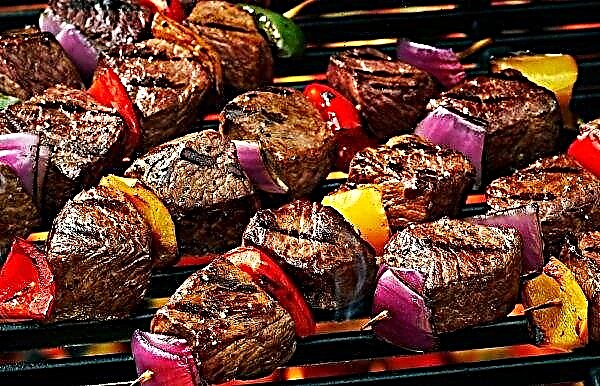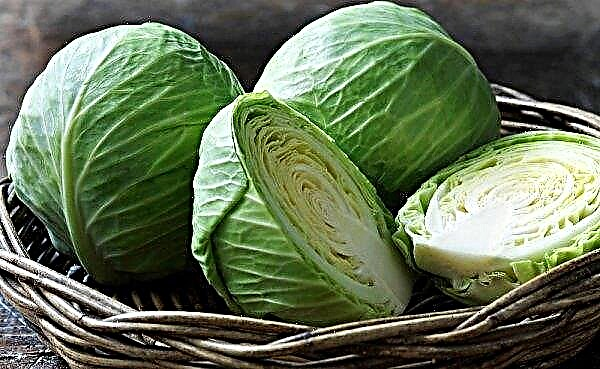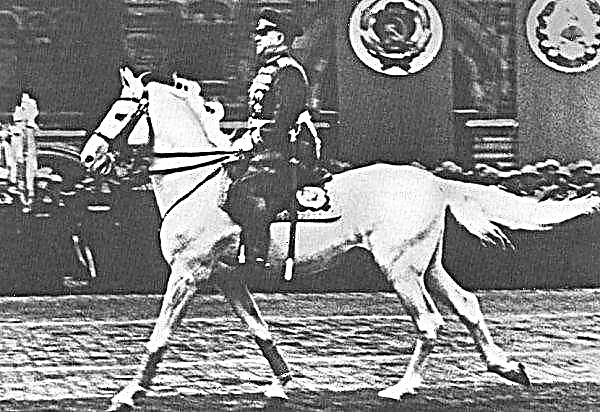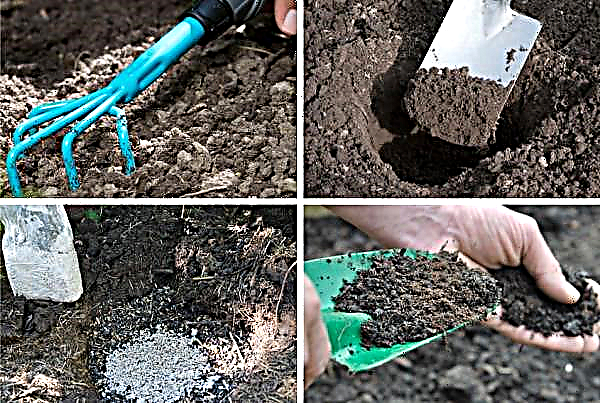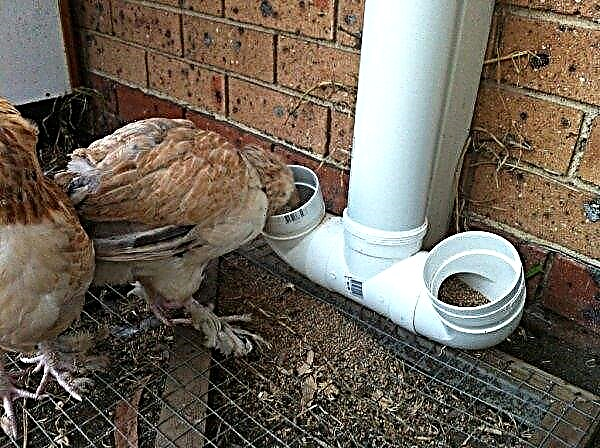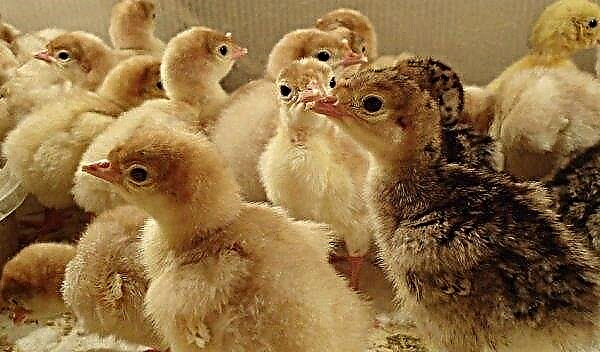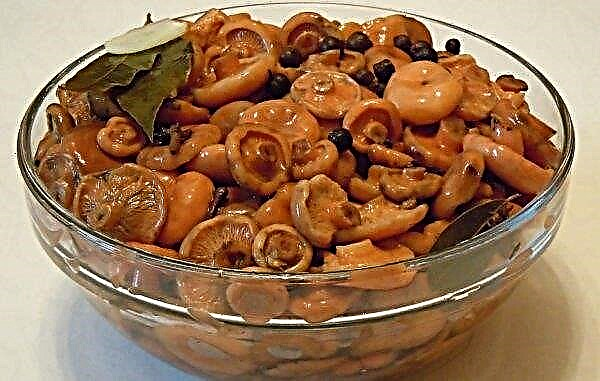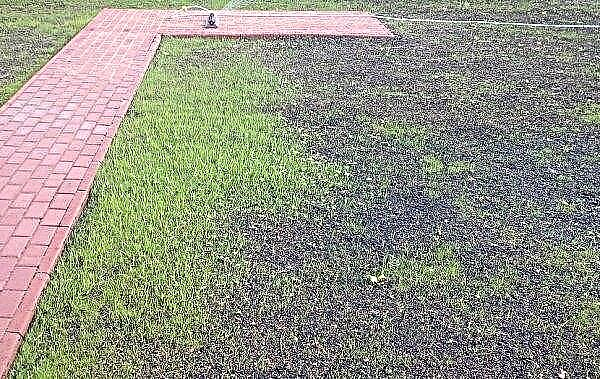Cold-resistant varieties of cucumbers have always been appreciated by Russian gardeners, since they are suitable for cultivation both in the central and northern regions of the country with rather harsh climatic conditions. There are really a lot of suitable options for planting, but in this article we will talk about one of the best - Chinese cold-resistant cucumber, and what exactly it is remarkable for and how to grow an abundant crop of large fruits - read on.
Characterization and description of the variety
Chinese cucumbers appeared in Asia and for a long time were grown exclusively in Chinese territory. However, back in the last century, they began to be cultivated in Russia, in particular, for breeding purposes. Chinese cold-resistant is the result of such selection experiments by specialists of the Zedek agricultural firm. Despite its southern origin, it is also well established in colder regions, albeit sometimes through the cultivation of seedlings in a greenhouse or greenhouses.
Did you know? Inhabitants of the Pacific Islands wrapped cucumbers in banana leaves and dug in their plots in case of a storm or crop failure. If some man wants to marry the girl he likes, then he must provide his cucumber savings to her family as a ransom for the bride.
Botanical description of the bush and fruits
Cucumbers of this variety are fast-growing plants with a large number of side shoots. So that they do not bend under the weight of the fruits, they are tied to trellises, fixing in several places at once. Leaf plates - medium in size, saturated green, moderate density. The ovary is of a bundle type, which greatly facilitates the process of collecting ripened fruits. Zelentsy themselves are cylindrical in shape, sometimes slightly curved (resembling a ram's horn) Large tubercles with white spikes are scattered all over their surface, but the neck, on the contrary, is short. The skin is thin, shiny, but at the same time quite dense. The pulp is very juicy and aromatic, with no signs of bitterness, but with small seeds inside. The average fruit length is 50-60 cm, and weighs up to 150 g. Chinese cold-resistant cucumbers are an excellent solution for preparing summer salads, but it is not very convenient to use them for conservation, unless you start cutting greenery into several parts.
Zelentsy themselves are cylindrical in shape, sometimes slightly curved (resembling a ram's horn) Large tubercles with white spikes are scattered all over their surface, but the neck, on the contrary, is short. The skin is thin, shiny, but at the same time quite dense. The pulp is very juicy and aromatic, with no signs of bitterness, but with small seeds inside. The average fruit length is 50-60 cm, and weighs up to 150 g. Chinese cold-resistant cucumbers are an excellent solution for preparing summer salads, but it is not very convenient to use them for conservation, unless you start cutting greenery into several parts.
Fruitfulness
Under good growing conditions, one bush can bear up to 20-30 kg of fruit, but the most abundant harvests occur in the first 2-3 weeks of fruiting plants. If you don’t have time to immediately harvest, it’s okay: the fruits turn yellow very slowly. True, you don’t need to delay the harvesting, because on the overgrown fruits a thick skin is formed, and their flesh loses its juiciness.
Important! It is advisable to recycle collected Chinese cold-resistant greens in the first few days after removal, since they are prone to wilting.
The timing of flowering and fruit ripening
The fruiting period of cucumbers of the described variety begins approximately 5–10 days after the appearance of the ovary or 50–55 days after the germination of young seedlings, continuing until the frosts. White flowering of plants is observed several weeks before the formation of greenery.
Pros and cons of the variety
Like many other cucumber varieties, Chinese cold-resistant has its strengths and weaknesses, which you should definitely be aware of before planting a crop on the site.
- The following characteristics are included in the list of advantages of the specified cucumber:
- high productivity;
- relatively short ripening;
- extended fruiting period, allowing you to get juicy fruits until the frost;
- the possibility of growing in the shade;
- cold resistance;
- self-pollination of plants;
- high resistance to diseases;
- low tendency to yellowing and barreling when overripe fruits.
- As for the disadvantages of the variety, then they include:
- low germination of seeds;
- low keeping quality of the collected fruits and the same low portability, and if we take into account the size of the fruit, which is not always convenient to preserve, it is understandable why some gardeners prefer to plant other varieties on the site.
Sowing and agricultural cultivation
The hybrid cold-resistant Chinese variety is suitable for growing both in open and closed soil, which is more typical for regions with a cold climate. In the southern territories and in some areas of the central regions of the Russian Federation, sowing of seeds is practiced immediately on the bed, but in any case, each option has its own specific features of the procedure itself and the further care of seedlings.
Did you know? On the territory of European countries, it is customary to use only long and smooth cucumbers, which are considered ordinary. Patchy varieties widespread in Russia are called "cucumbers in a Russian shirt" and are not so in demand in Europe.
In the open ground
Planting cucumbers directly on the bed can be carried out both by seed and seedling methods, which is more dependent on specific climatic features. If you choose the seed option, then the planting material will need to be prepared properly: sort, lower suitable seeds into water for 30 minutes, take up the emerged specimens, and move the drowned ones into a weak potassium permanganate solution for disinfection before planting. To accelerate the emergence of seedlings, it is worthwhile to additionally germinate the selected seeds, spreading them on a damp cloth and leaving them in a warm place, usually it takes several days for the seedlings to peck, after which they can be planted in open ground, leaving at least 20 cm of free space between adjacent seeds. Since hybrid bushes of the Chinese cold-resistant variety grow only upwards, this place will be quite enough for comfortable growth.
To accelerate the emergence of seedlings, it is worthwhile to additionally germinate the selected seeds, spreading them on a damp cloth and leaving them in a warm place, usually it takes several days for the seedlings to peck, after which they can be planted in open ground, leaving at least 20 cm of free space between adjacent seeds. Since hybrid bushes of the Chinese cold-resistant variety grow only upwards, this place will be quite enough for comfortable growth.
Video: sowing cucumber seeds in open ground
Given the low germination of sown seeds, many gardeners prefer to plant already grown seedlings on the garden. The timing of sowing seeds for seedlings is selected taking into account their further planting on the bed (usually the transplant is performed in mid-May). In home cases, the seed material is best sown in separate volumetric cups, since even young plants have a well-developed root system.
Important! For the first time after planting on a bed above seedlings, it is better to establish a film cover, especially if nighttime temperature drops are not uncommon in a particular growing region. As soon as young plants get stronger, and the difference between night and day temperature becomes less, the film is removed.
The ideal substrate for sowing seeds is a mixture of peat, sawdust (mainly hardwood), sand and humus, in a ratio of 6: 1: 1: 2. The seed placement depth should not exceed 1.5 cm, and only one seed is placed in one cup. After sowing, the earth is moistened, covered with a film and left in a dark place for germination. Sprouts appear after about 3-5 days, after which the film cover can be removed, and the glasses with cucumbers can be moved to the sunny windowsill. Watering seedlings should be regular and plentiful, but without stagnation of moisture in seedlings. As soon as the threat of return spring frosts passes, young plants are transplanted to the garden (on average in the second half of June).
Sprouts appear after about 3-5 days, after which the film cover can be removed, and the glasses with cucumbers can be moved to the sunny windowsill. Watering seedlings should be regular and plentiful, but without stagnation of moisture in seedlings. As soon as the threat of return spring frosts passes, young plants are transplanted to the garden (on average in the second half of June).
Video: sowing seeds of cucumbers for seedlings
In the greenhouse
Under the film cover of the greenhouse, grown seedlings are planted in May, after arranging beds with ridges up to 30 cm high. As with planting cucumbers in open soil, at least 20–25 cm of free space should be left between adjacent specimens. The distance between the rows is at least 90 cm, which will provide easier care for seedlings. Wells for seedlings should be slightly larger than the size of the glass in which cucumbers were grown earlier. To decontaminate the land, they often use a weak solution of potassium permanganate and after it is completely absorbed, the seedlings themselves are moved to the selected place. The process of transplanting young plants is simple:
Wells for seedlings should be slightly larger than the size of the glass in which cucumbers were grown earlier. To decontaminate the land, they often use a weak solution of potassium permanganate and after it is completely absorbed, the seedlings themselves are moved to the selected place. The process of transplanting young plants is simple:
- First you need to water the seedlings abundantly and carefully remove the plants from the seedlings, trying not to damage their root system.
- Then each cucumber bush must be placed in a hole prepared for it and, having covered it with soil, lightly compact the ground.
- At the end of the planting process, they are abundantly watered and, if necessary, mulched with sawdust or rotted foliage.
Video: planting cucumber seedlings in a greenhouse
In preparing the greenhouse for planting cucumber seedlings, you can pre-stretch the film over the surface, thereby contributing to better heating of the substrate.
Care Features
Grade care Chinese cold-resistant is based on standard measures: timely watering, regular top dressing and gartering of plants to the supporting trellis.
Watering and fertilizing
Any varieties of cucumbers are moisture-loving crops, so when growing Chinese cold-resistant varieties, it is worthwhile to provide plants with an optimal level of humidity, sometimes even due to spraying. The ideal temperature in the greenhouse during seedling growth is + 24 ° C, but the humidity level can reach 70–80%. Watering is carried out as the upper soil layer dries, but on average - at least 1 time in 2 days. The irrigation fluid must be settled and warm (you can use water heated by the sun). Fertilized plants are planted about 4 times per season, and organic fertilizing alternates with mineral compounds. For the first time, shortly after transplanting cucumber seedlings to a permanent place, saltpeter (25 g per bush) is applied under them and immediately watered abundantly with water so that the fertilizer is evenly distributed in the thickness of the soil. After a few more weeks, you can fertilize the cucumbers with carbamide, and then use ashes, organic matter, potassium as top dressing, each time well watering the plantings after the procedure.
The irrigation fluid must be settled and warm (you can use water heated by the sun). Fertilized plants are planted about 4 times per season, and organic fertilizing alternates with mineral compounds. For the first time, shortly after transplanting cucumber seedlings to a permanent place, saltpeter (25 g per bush) is applied under them and immediately watered abundantly with water so that the fertilizer is evenly distributed in the thickness of the soil. After a few more weeks, you can fertilize the cucumbers with carbamide, and then use ashes, organic matter, potassium as top dressing, each time well watering the plantings after the procedure.
Garter and bush formation
Chinese cold-resistant cucumber plants form long lashes that, without formation and appropriate garter, can break under the weight of cucumbers. At the initial stages of seedling cultivation, the forming pruning involves the removal of five lateral shoots located in the lowest part of the bush, and after the fruit is formed, you will have to remove all the extra leaves and substandard greenhouses that differ from the normal ones in color or texture. Among the main characteristics of the variety is high resistance to lateral growth, but if it still appears, then you will have to immediately remove the extra stepsons, controlling their appearance during the entire period of plant growth. When tying plants to a support, it is better to use only soft ropes and not tighten the knots too much so as not to injure the main shoots during their growth.
Among the main characteristics of the variety is high resistance to lateral growth, but if it still appears, then you will have to immediately remove the extra stepsons, controlling their appearance during the entire period of plant growth. When tying plants to a support, it is better to use only soft ropes and not tighten the knots too much so as not to injure the main shoots during their growth.
Soil care
Soil cultivation, weeding of cucumber plantations and soil mulching are usually performed shortly after the next watering, when the earth is as soft and supple as possible. Weed control and good soil breathability are important at any stage of cucumber cultivation, but especially in the first few weeks after transplanting young and immature seedlings. When removing weeds or plowing up the earth, try not to damage the root system of the crop, otherwise its growth may stop (the optimal penetration of the instrument during all the steps is no more than 10 cm)
When removing weeds or plowing up the earth, try not to damage the root system of the crop, otherwise its growth may stop (the optimal penetration of the instrument during all the steps is no more than 10 cm)
Pest and Disease Control
When breeding varieties, Chinese cold-resistant breeders made every effort to obtain a disease-resistant crop, so plants are rarely damaged by diseases and pests. However, it is not worth excluding such a probability, especially when you consider the possibility of improperly organized care.
Among the main problems that a gardener may encounter are the following:
The main preventive measure to prevent the occurrence of diseases and pests on cucumber bushes will be metered watering and soil moisture control in the garden, but if trouble is not avoided, you will have to resort to special insecticidal and fungicidal preparations: Iskra, Aktellik, Aktara , "Skor" and others. The norms and rules for the use of each of the compositions are always marked on their packaging.Harvesting and storage
In the southern regions, the collection of the first ripe cucumbers of the Chinese cold-tolerant variety begins in mid-July. At the initial stages of the ovaries on the bushes a little, but after the first harvest, their number only increases and fruiting becomes stable and high.
Harvested fruits can be stored for no more than 2-3 days, after which they begin to lose elasticity and become not so juicy. For this reason, gardeners do not recommend immediately picking all the cucumbers, especially if you are not going to close them in jars. The cold-resistant Chinese variety is a good solution for those who want to have tasty fresh fruits for a long time, but other varieties with smaller fruits will have to be planted to create blanks. Subject to the rules of cultivation, any of them will please with bulk harvests of delicious fruits.
The cold-resistant Chinese variety is a good solution for those who want to have tasty fresh fruits for a long time, but other varieties with smaller fruits will have to be planted to create blanks. Subject to the rules of cultivation, any of them will please with bulk harvests of delicious fruits.


